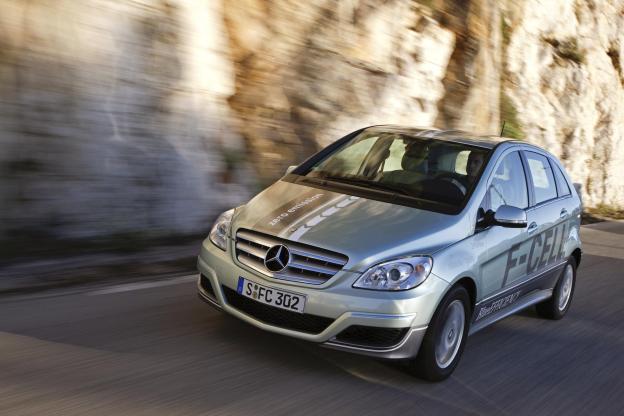
Lots of work is being done right now by scientists around the globe to make hydrogen fuel cells a more feasible replacement for gasoline and diesel engines.
We recently reported that researchers had devised a way to remove all carbon monoxide from the hydrogen power generation process, which, if implemented, would make hydrogen-powered cars that much more eco-friendly.
Now we learn of another breakthrough: Scientists have devised a new hydrogen catalyst that uses a graphene-based process that out-performs the much more expensive platinum-based catalysts used today.
“This initial research proves [graphene-based] catalysts work better than platinum,” said Jong-Beom Baek, director of the Interdisciplinary School of Green Energy/Low-Dimensional Carbon Materials Center at South Korea’s Ulsan National Institute of Science and Technology. “We are working now to optimize the materials.”
In a fuel cell, the catalysts are essentially used to convert chemical energy into electrical energy. This test proves that different catalysts perform better than others.
“Inside a ball miller, which is a canister filled with steel balls, the researchers broke graphite down into single-layer graphene nanoparticles. While the canister turned, they injected chlorine, bromine or iodine gas to produce different catalysts,” according to a Phys.org report.
After 10,000 cycles, the graphite nanoplatelets maintained 85.6 percent to 87.4 percent of their initial current. By comparison, the platinum electrodes maintained only 62.5 percent.
This, as you might imagine, is significant for several reasons. Not only is the graphite more plentiful and far less expensive than the platinum, it’s also more efficient. This new graphene-based catalyst is essentially a double-whammy home run, if we dare to oversimplify it – and we do.
We’ll be going down to California next month to drive and report on some of the hydrogen-powered cars being tested by the California Fuel Cell Partnership. If you’re at all interested, we suggest you check back soon for some in-depth reports on the current and future states of hydrogen fuel cell cars.
Editors' Recommendations
- Hyundai’s hydrogen fuel cell truck makes hauling freight green and glamorous
- Hydrogen was the fuel of tomorrow, so what happened?
- Toyota uses hydrogen fuel cells to power one of its Japanese factories
- Hyundai Nexo is the first fuel-cell vehicle crash-tested by the IIHS
- BMW may finally be ready to sell hydrogen fuel cell cars to the public


